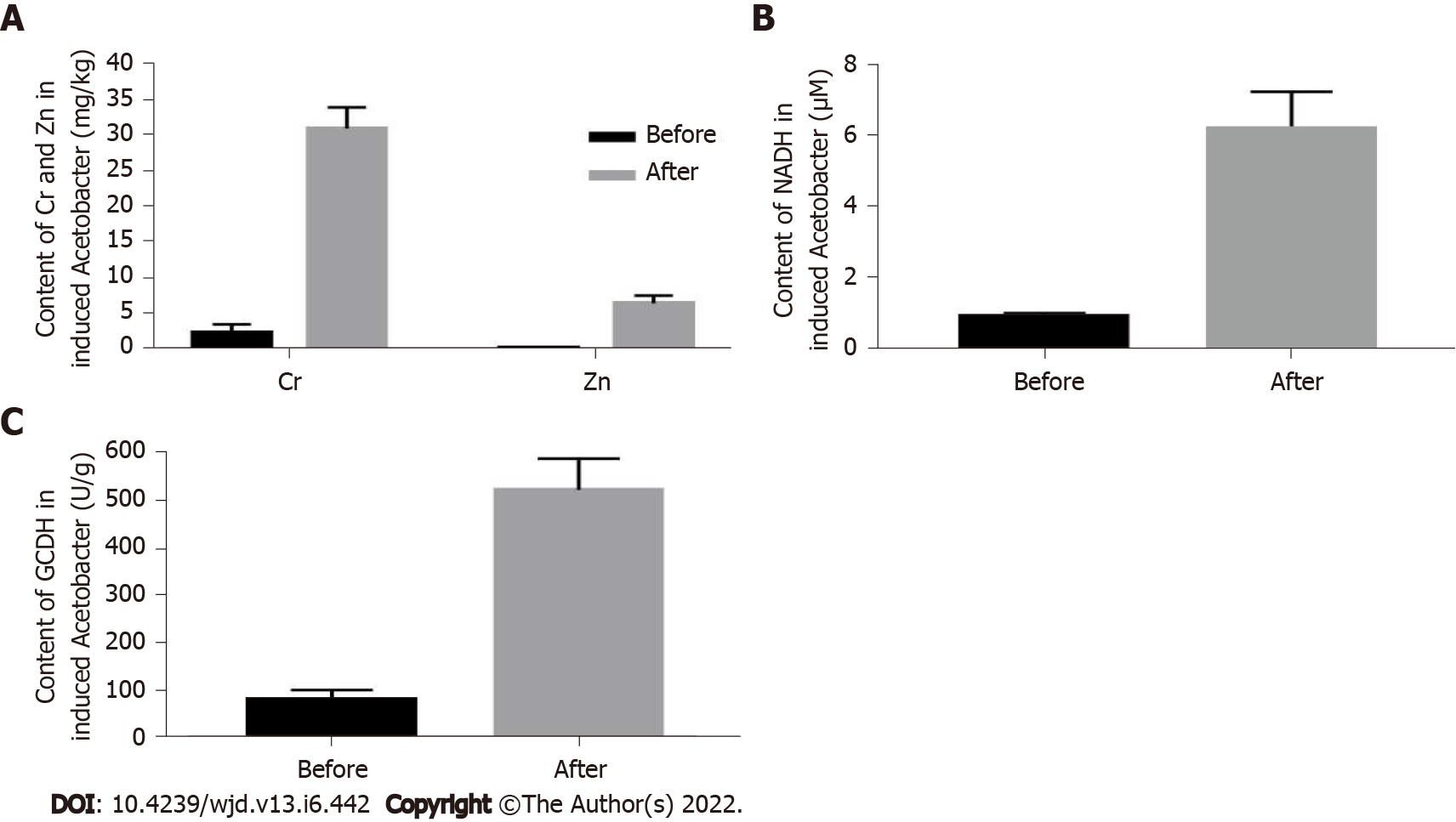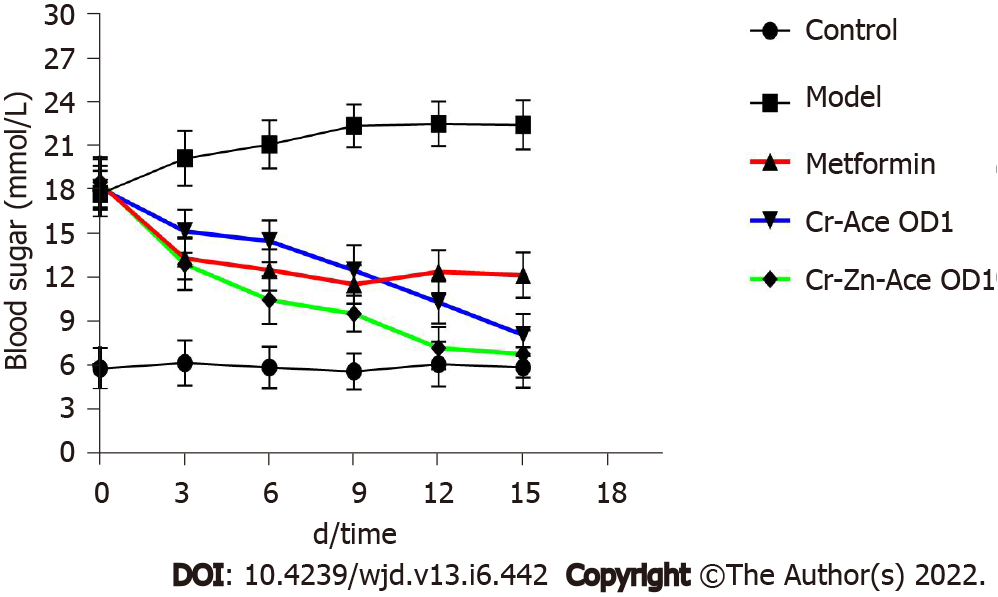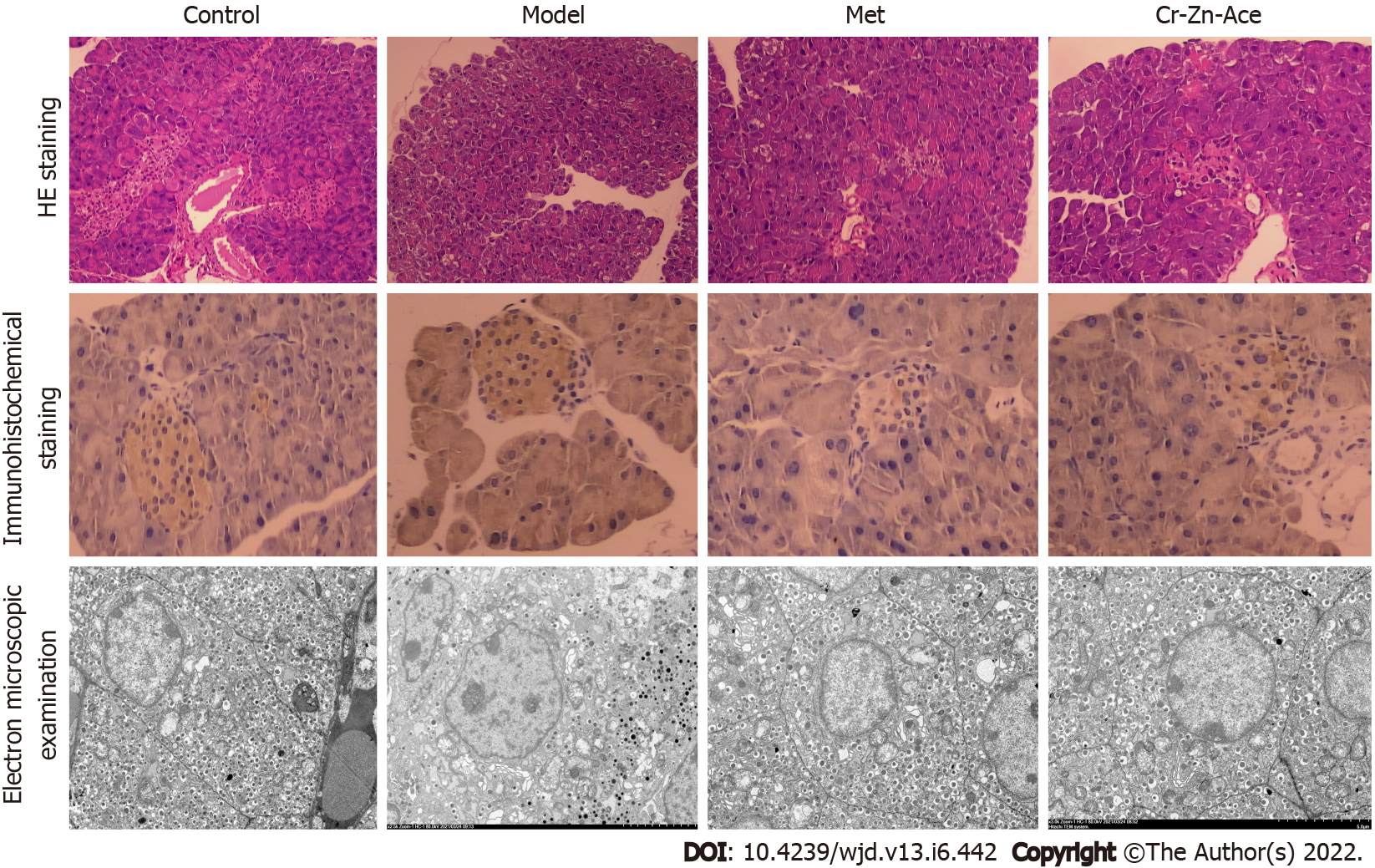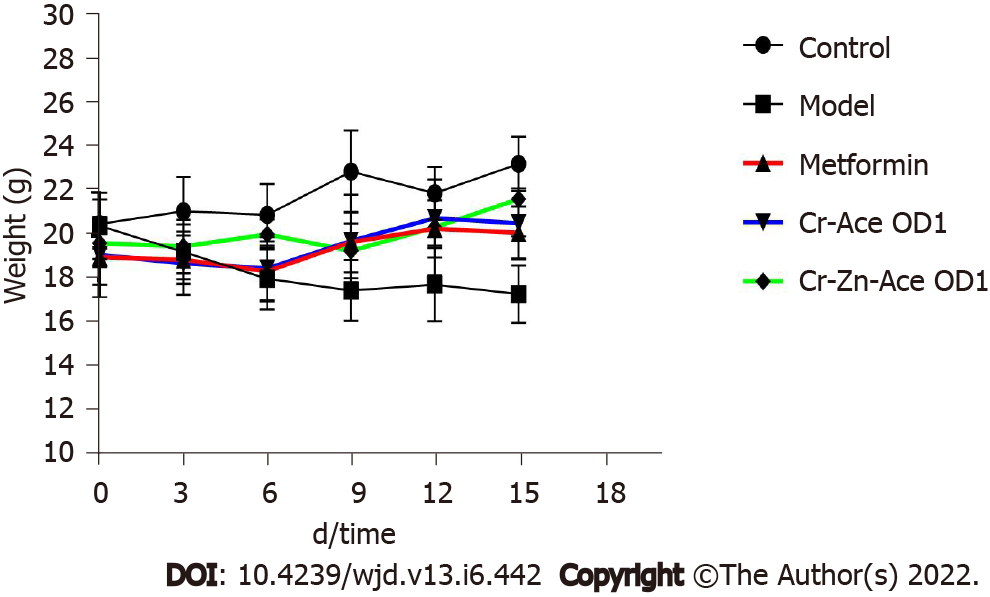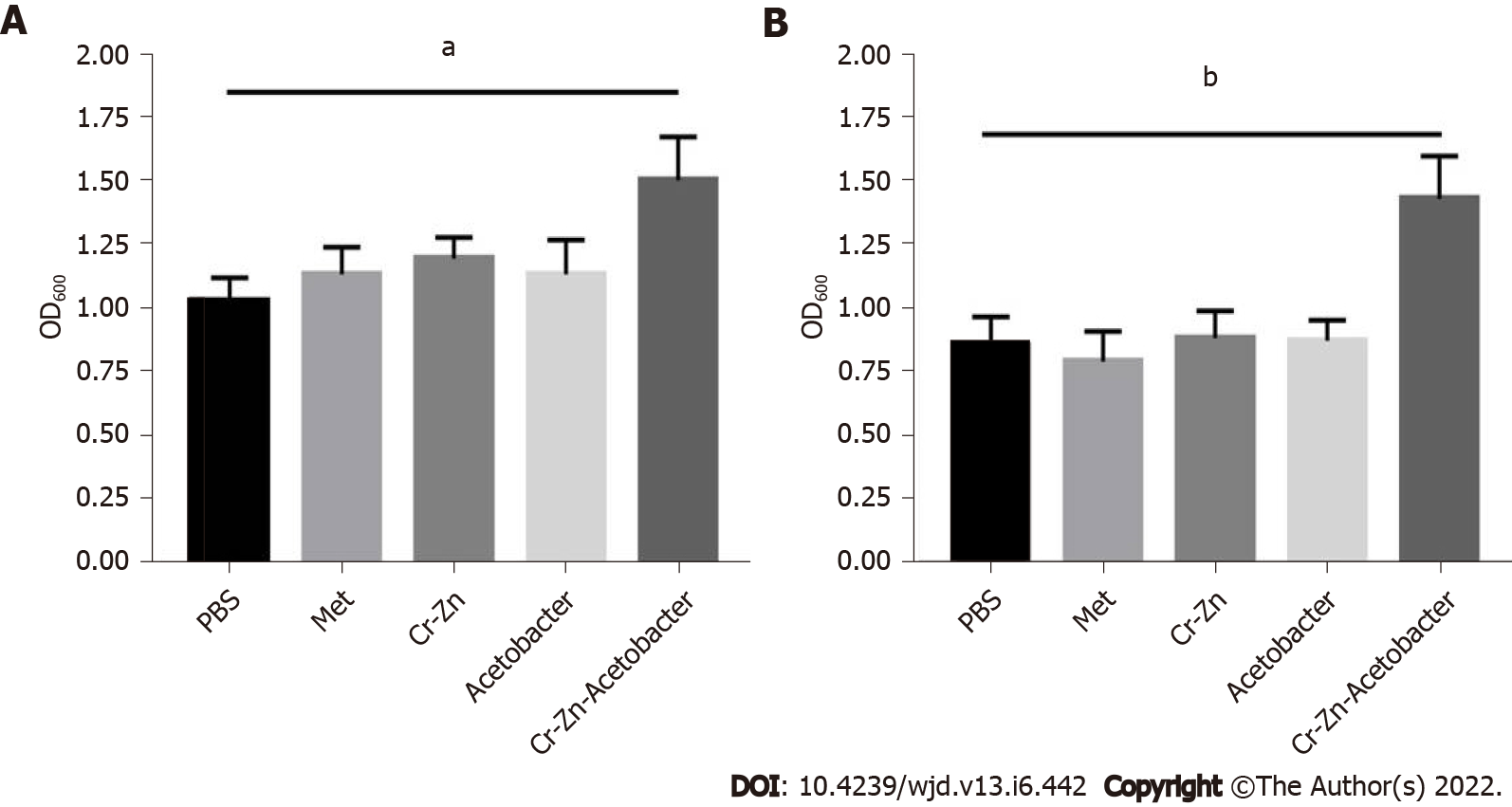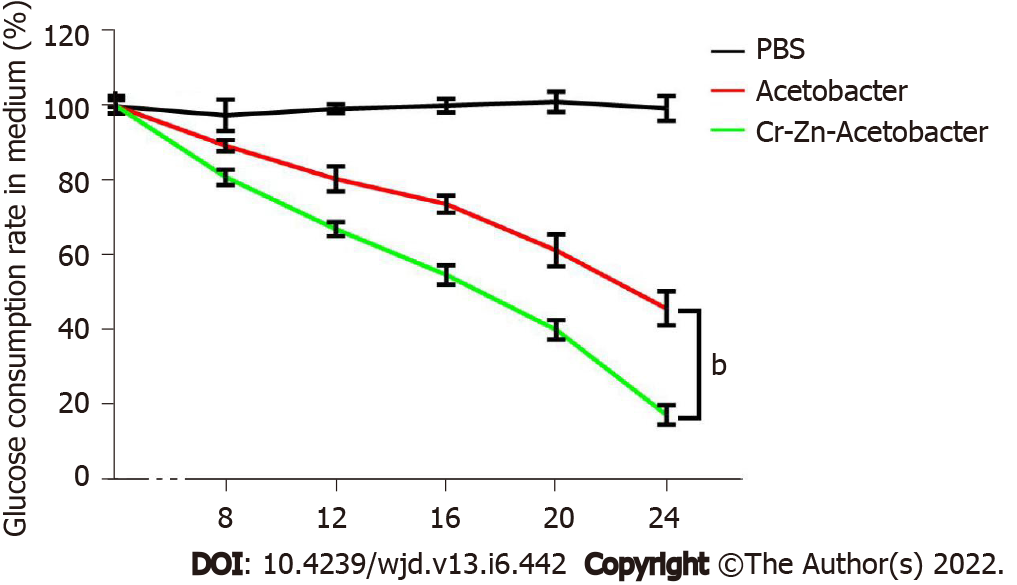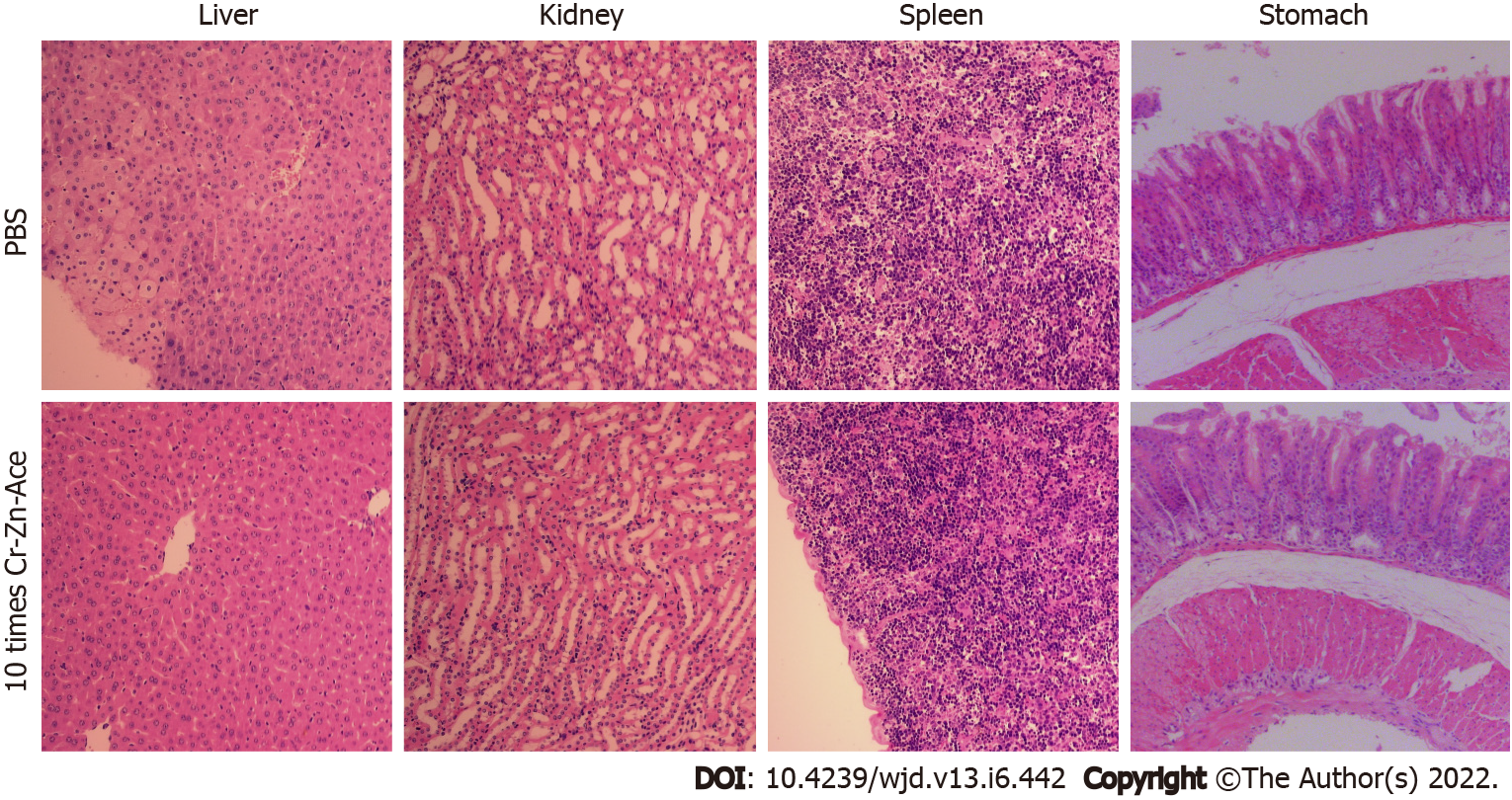Copyright
©The Author(s) 2022.
World J Diabetes. Jun 15, 2022; 13(6): 442-453
Published online Jun 15, 2022. doi: 10.4239/wjd.v13.i6.442
Published online Jun 15, 2022. doi: 10.4239/wjd.v13.i6.442
Figure 1 Detection of hypoglycemic components of chromium- and zinc-rich Acetobacter aceti.
A: Concentration of chromium and zinc; B: Concentration of dihydronicotinamide-adenine dinucleotide; C: Concentration of glucuronic acid dehydrogenase.
Figure 2 Evaluation of hypoglycemic effects of chromium- and zinc-rich Acetobacter aceti on mice with diabetes.
Figure 3 Repair effect of chromium- and zinc-rich Acetobacter aceti on tissues and cells of pancreatic islets.
Figure 4 Effects of chromium- and zinc-rich Acetobacter aceti on weight recovery of diabetic mice.
Figure 5 Effects of chromium- and zinc-rich Acetobacter aceti on promoting growth of pancreatic islet cells MIN6.
A: 5 mmol/L glucose; B: 25 mmol/L glucose. aP < 0.05; bP < 0.01.
Figure 6 Effects of chromium- and zinc-rich Acetobacter aceti on facilitating growth and insulin secretion of islet MIN6 cells.
A: 5 mmol/L glucose; B: 25 mmol/L glucose. bP < 0.01; cP < 0.001.
Figure 7 Capacity of chromium- and zinc-rich Acetobacter aceti for processing glucose.
bP < 0.01.
Figure 8 Safety evaluation of chromium- and zinc-rich Acetobacter aceti.
- Citation: Huang YY, Qin XK, Dai YY, Huang L, Huang GR, Qin YC, Wei X, Huang YQ. Preparation and hypoglycemic effects of chromium- and zinc-rich Acetobacter aceti. World J Diabetes 2022; 13(6): 442-453
- URL: https://www.wjgnet.com/1948-9358/full/v13/i6/442.htm
- DOI: https://dx.doi.org/10.4239/wjd.v13.i6.442









